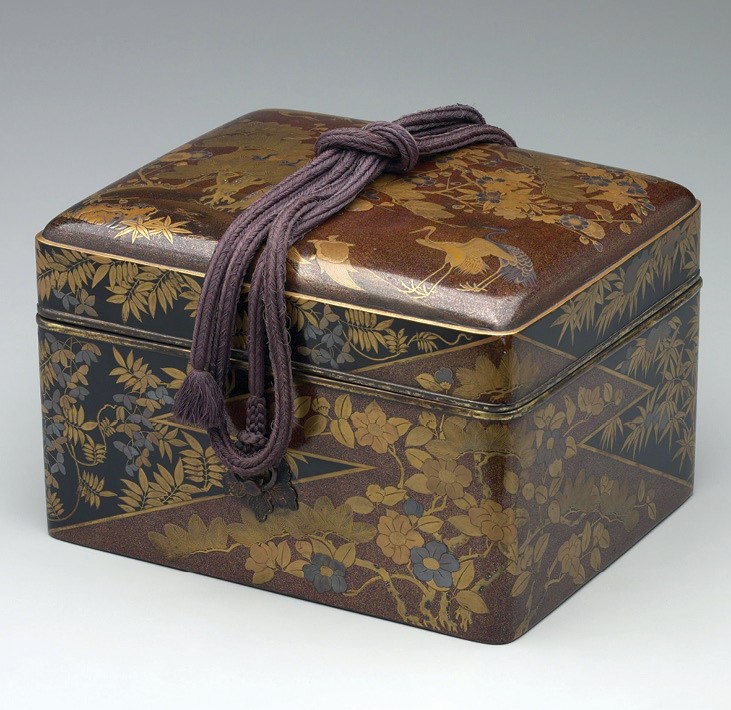Gifts of Gold: The Art of Japanese Lacquer Boxes will introduce viewers to the medium, functions, decorative techniques, and symbolic associations of Japanese lacquer by presenting approximately twenty exquisite works ranging from the 15th through the 21st centuries, complemented by a few select paintings. The exhibition will consist of four groupings with the following themes: 1) forms in black and red 2) seasonal and auspicious motifs 3) poetic and literary associations 4) materials and techniques. Objects in the exhibition are drawn from institutional and private collections, as well as featuring a 19th century writing box recently acquired by the Fairfield University Art Museum.
In Japan, true lacquerware is created through a time-consuming process wherein the sap of the lacquer tree is harvested, refined, and pigmented before being applied in successive layers to a substrate, often of wood. Each layer of lacquer cures and hardens, rendering the vessel waterproof and durable. Although many wares are left plain to showcase the glossy black or red finish, the art reached heights of decorative potential with developments in the 16th and 17th centuries in techniques of “sprinkled picture” (maki-e) decoration. In these uniquely Japanese techniques, small particles of gold and other metals are sprinkled onto lacquer in abstract and pictorial designs, rich with seasonal, poetic, and literary allusions. Although lacquer objects were ultimately functional – writing boxes, storage boxes, tea caddies, tables, and dining utensils – the expense and decorative richness ensured that some objects were rarely used. Lacquer boxes therefore also became markers of status, taste, and wealth. Tebako, or cosmetics boxes, were important elements of a bride’s trousseau, and writing boxes (suzuribako) stored the implements used for calligraphy; such boxes could also be presented as gifts on important and auspicious occasions, such as the New Year. Moreover, small seal and medicine cases (inrō) with exquisite designs were worn suspended from the belts of men’s traditional dress and displayed the height of fashion in the Edo period (1615-1868). Borrowing from – and in turn influencing – other arts in Japan, the lacquer tradition stands in conversation with arts such as textile design, ceramics, painting, calligraphy, and sculpture.
※The Museum is temporarily closed to protect against the spread of COVID-19, and has postponed, cancelled, or moved online all public events and programs through April 30.
